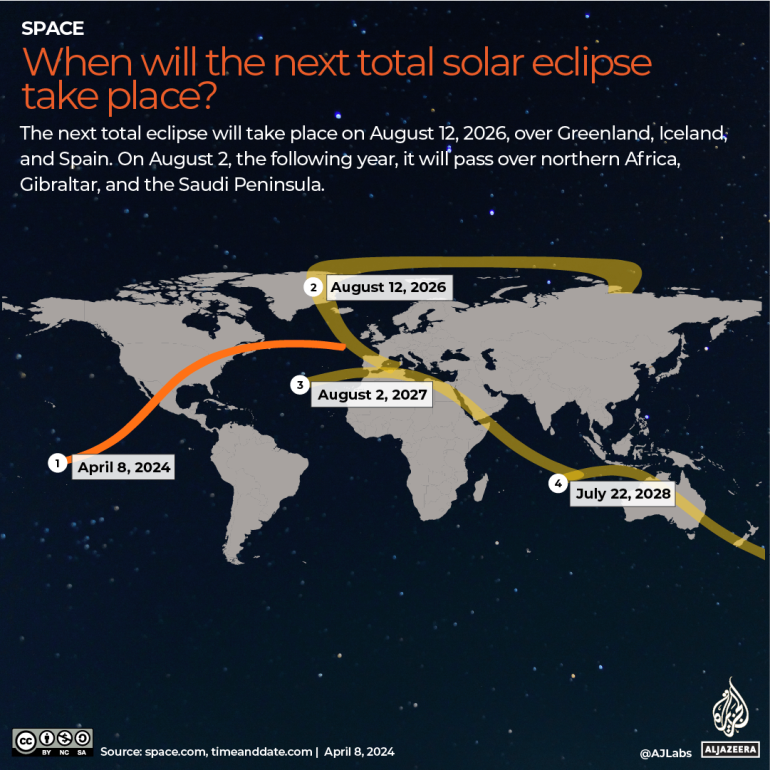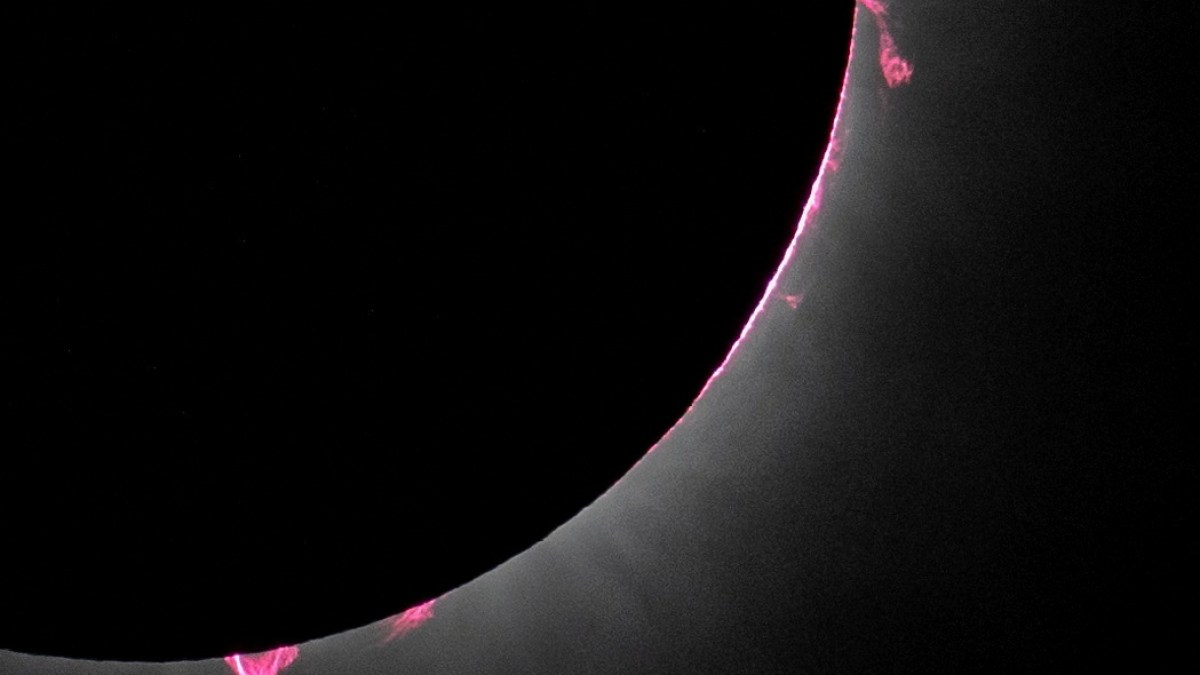Total solar eclipse sweeps across North America: Eight highlights
A total solar eclipse has crossed North America, slicing a diagonal line from the southwest to the northeast, briefly plunging communities in Mexico, the United States and Canada along the path into darkness.
This was the first total eclipse to sweep across a large swath of North America since 2017. The next total solar eclipse will take place on August 12, 2026, over Greenland, Iceland and Spain.
Here are eight highlights:
Mexico’s Mazatlan was first city to experience totality
Mexico’s beachside resort town of Mazatlan was the first major viewing spot for totality. Thousands in solar-safe eyewear perched in deck chairs along the coastal promenade, and an orchestra played the Star Wars movie theme as skies darkened under the approaching lunar shadow.
The crowds burst into cheers, applause and whistles when the eclipse reached totality.
Eclipse fans travelled from far and wide hoping to glimpse the phenomenon somewhere along the “path of totality” stretching 2,500 miles (4,000 km) from Mexico’s Pacific Coast through Texas and across 14 other US states into Canada.
Lourdes Corro, 43, said she travelled 10 hours by car to reach Mazatlan.
“The last one I saw was when I was nine years old,” Corro said. “There are a few clouds but we can still see the sun.”

Some animals changed their behaviour
A researcher observing animals at the Fort Worth Zoo in Texas during totality said some seemed extra vigilant, including a rambunctious young male gorilla that stood on a pole.
At the Dallas Zoo, flamingos gathered in the middle of a pond and the penguins also clustered together, an employee said.
“The flamingos started getting crazy and started getting in the water because they thought it was time to sleep,” visitor Mara Villeda, of Arlington, told local news agency NBC 5 Dallas-Fort Worth.
Despite some changes at the Fort Worth Zoo, most animals remained relatively calm during totality and many moved to where they were put away for the evening.
“In general, everybody was really well adjusted. Nobody was doing sort of bonkers behaviour,” said Adam Hartstone-Rose, a researcher from North Carolina State University who came with a team to Texas for the eclipse.
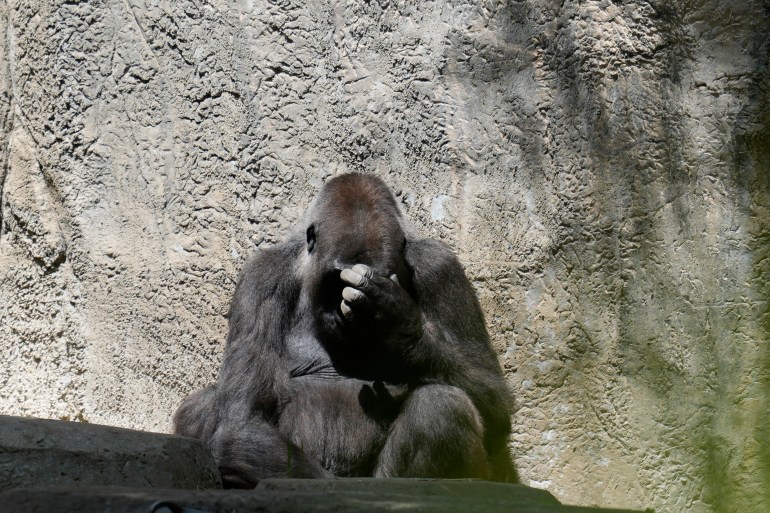
Weddings and proposals
In Russellville, Arkansas, a town of roughly 30,000 people near the southern US state’s only nuclear power plant, almost 400 couples tied the knot by the shadow of the moon in a mass wedding event dubbed “Elope and the Eclipse”.
Further north in Niagara Falls, clouds threatened to disrupt viewing parties for the crowd of about 2,000 people who had gathered in the state park.
There were at least two weddings and one marriage proposal at the falls as the clouds parted to reveal the last 30 seconds of totality, and the crowd went wild, cheering and shouting, “It’s so beautiful.”
As the skies began to brighten again, a band played out the retreating lunar shadow with a rendition of REM’s 1992 hit song Man on the Moon.
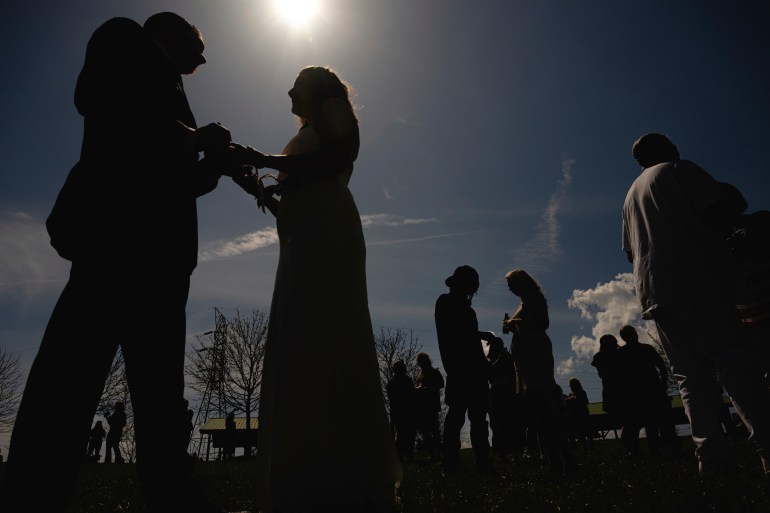
New world record
Across the river in Niagara Falls, Ontario, 309 people – some from as far away as Singapore and London – came dressed up as the sun, setting a new world record for the largest group to wear solar costumes in one place, contest organisers said.
The previous record was set in 2020 by 287 participants in China.

Hear and feel the eclipse
While eclipse watchers looked to the skies, people who were blind or visually impaired were able to hear and feel the celestial event.
Devices that can translate the eclipse on sound and touch devices were available at some public gatherings.
An astronomer who is blind collaborated with an astronomer from Harvard University to design the LightSound box, which translates changing light in the sky into differing musical notes. Another device allowed users to feel the eclipse through rows of dots that moved up and down.
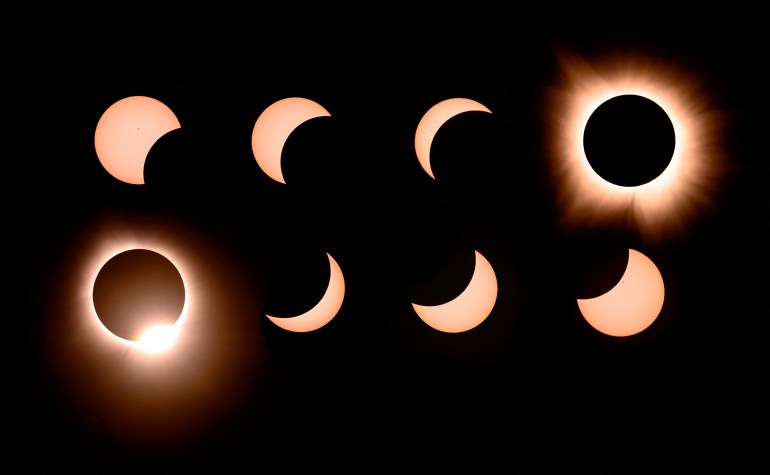
The eclipse in numbers
The out-of-sync darkness lasted as long as 4 minutes and 28 seconds. That is almost twice as long as it was during the US coast-to-coast eclipse seven years ago because the moon was closer to Earth.
It took just 1 hour and 40 minutes for the moon’s shadow to race more than 4,000 miles (6,500 kilometres) across the continent.
The path of totality – approximately 115 miles (185 kilometres) wide – encompassed several major US and Canadian cities, including Dallas, Indianapolis, Cleveland, Buffalo, New York and Montreal. An estimated 44 million people lived within the track, with a couple of hundred million more within 200 miles (320 kilometres).
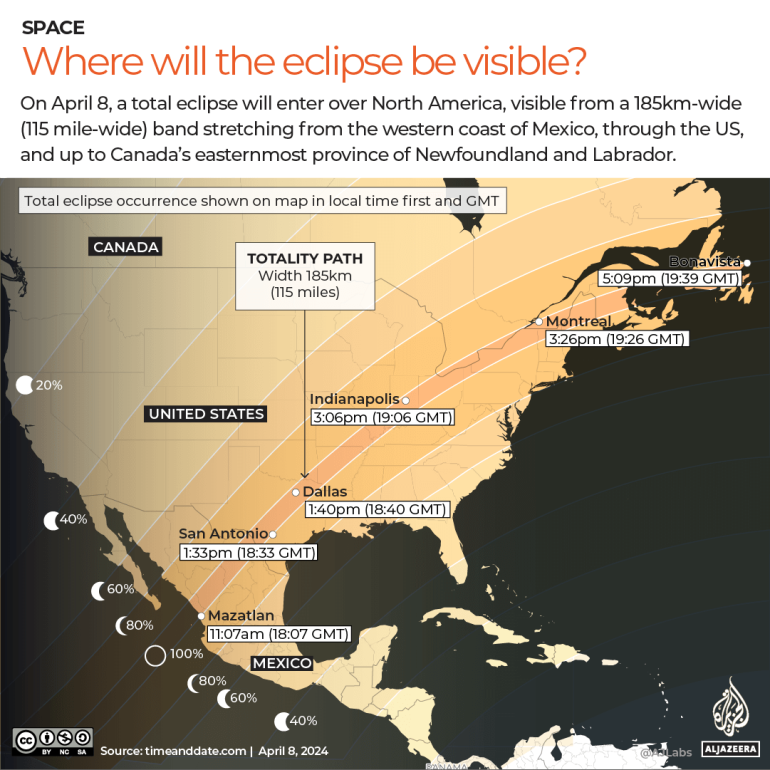
Jupiter and Venus visible during totality
Hundreds of people at Shawnee National Forest in the US state of Virginia erupted into cheers as darkness fell over their campsite.
Temperatures dropped several degrees. Birds chirped and frogs croaked. And planets including Jupiter and Venus were visible during the more than 3 minutes of totality.
When is the next total solar eclipse?
The next total solar eclipse will take place on August 12, 2026, over Greenland, Iceland and Spain. Almost exactly a year later, on August 2, 2027, one will be visible from northern Africa, Gibraltar and the Arabian Peninsula.
In the US, the next total eclipse will occur in 2033 but will only be visible from Alaska.
Western Canada, Montana and North Dakota will witness a total eclipse in 2044 and, the following year, people in the US will be able to see a total eclipse from coast to coast, according to the NRAO.
Experts say a day will come, however, when total eclipses will stop occurring altogether – but not for quite a while.
As the universe expands with the moon moving further away from the Earth each year, and the sun gets bigger, the moon will eventually become too small in the sky to block the whole sun.
